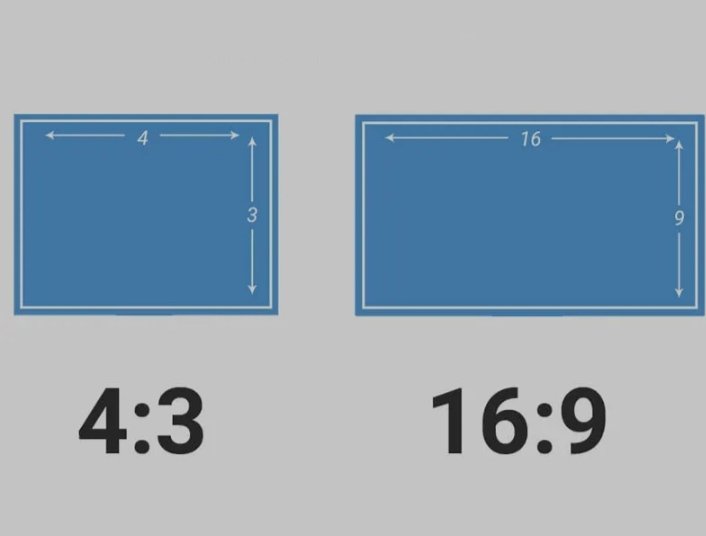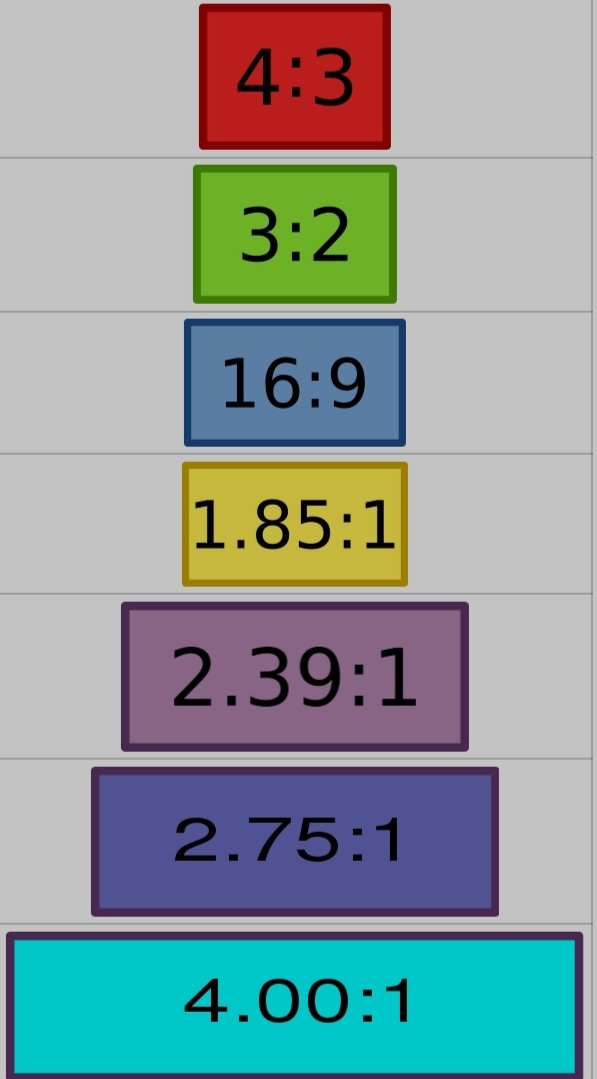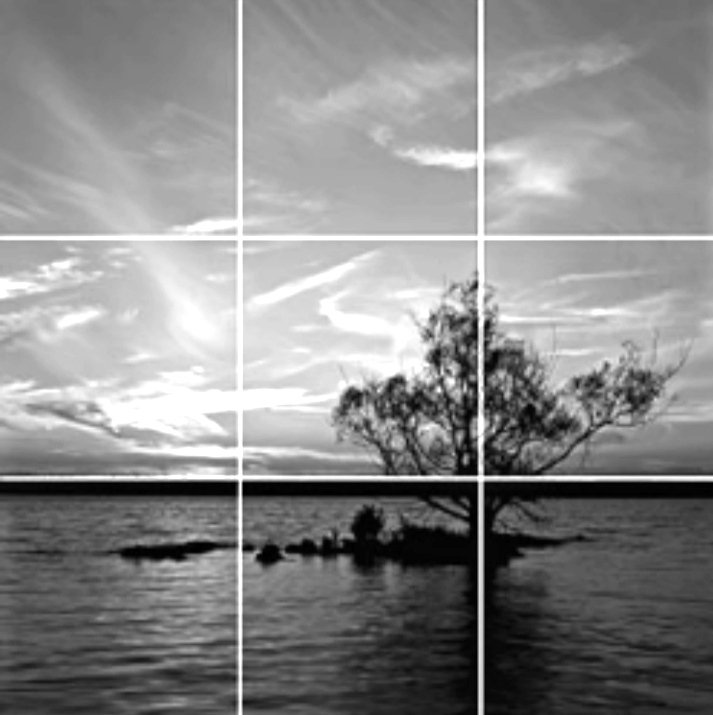Relación de aspecto y la regla de los tercios (ESP-ING)


Hola.
¿Cómo están? Espero que bien, en esta ocasión les hablaré un poco de lo que estoy aprendiendo como estudiante de cinematografía en la Universidad Experimental de las Artes de Maracay Menezuela . Les hablaré sobre la relación de aspecto y las reglas de los tercios y espero que les sirva para hacer mejores fotos y videos.
La relación de aspecto o ratio de una imagen es la proporción entre el ancho y la altura de una imagen. Esto se calcula dividiendo lo ancho por la altura y normalmente se expresa con dos números separados por dos puntos.
Un ejemplo: el clásico 4:3 significa que en cada cuatro unidades a lo largo hay tres unidades a lo alto.

En cinematografía se usan relaciones de aspectos más panorámicas, esto es, para poder captar más elemento en la composición de una toma. Una de las más comunes es la 14:6 que se conoce como cinemascope.

Pero claro, tenemos que tomar en cuenta que a la hora de componer, ya sea una, toma cinematográfica o una foto, la relación de aspecto no se tiene que usar como algo ultra necesario o alguna norma que se deba de seguir, sino como una herramienta que nos ayuda a lograr lo que queremos transmitir, es decir que debemos elegir la relación de aspecto de nuestras imágenes basándonos en la intención que tengamos a la hora de hacer una foto, video o filme
Cómo estudio cine, también nos enseñan sobre fotografía y la regla de los tercios. Considero que es importante para lograr hacer fotos llamativas.
La regla de los tercios es una guía para la composición que coloca al sujeto, objeto o cualquier cosa que queremos enfocar en el tercio izquierdo o derecho de una imagen, lo que deja los otros dos tercios libres para que la foto no se sienta tan sobrecargada. Si bien hay otras formas de composición, por lo general, la regla de los tercios te lleva a hacer fotos atractivas y bien compuestas.

Para dividir una foto, o incluso el visor de tu cámara, en nueve partes iguales, usando líneas horizontales y verticales para formar una cuadrícula, solo tienes que activar una configuración que puedes seleccionar en la mayoría de las cámaras e incluso en tu teléfono.
Cómo estoy recién empezando, no cuento con una cámara para mostrarles cómo hacerlo, por eso, tomo prestado algunas imágenes para dar ejemplos, obvio daré los respectivos créditos. Tambien quiero decir que esto es solo un pequeño concepto algo basico para ir mejorando
Con esto me voy despidiendo y espero que esto les haya ayudado para hacer mejores fotos. Gracias por leer.

Hello.
How are you? I hope you are well, this time I will tell you a little bit about what I am learning as a cinematography studentat the Experimental University of the Arts of Maracay Venezuela. I will talk to you about the aspect ratio and the rules of thirds and I hope it will help you to make better photos and videos.
The aspect ratio or ratio of an image is the proportion between the width and height of an image. This is calculated by dividing the width by the height and is usually expressed with two numbers separated by a colon.
An example: the classic 4:3 means that for every four units in length there are three units in height.

In cinematography, more panoramic aspect ratios are used, that is, to be able to capture more elements in the composition of a shot. One of the most common is 14:6, known as cinemascope.

But of course, we have to take into account that when composing, whether it is a cinematographic shot or a photo, the aspect ratio should not be used as something ultra necessary or a rule to be followed, but as a tool that helps us to achieve what we want to convey, that is to say that we must choose the aspect ratio of our images based on the intention we have when taking a photo, video or film.
As a film studio, we are also taught about photography and the rule of thirds. I think it is important to make striking photos.
The rule of thirds is a guideline for the places the subject, object or whatever we want to focus on in the left or right third of an image, which leaves the other two thirds free so that the photo doesn't feel so crowded. While there are other ways of composition, generally, the rule of thirds leads you to make attractive, well-composed photos.

To divide a photo, or even your camera's viewfinder, into nine equal parts, using horizontal and vertical lines to form a grid, just turn on a setting you can select on most cameras and even your phone.
As I'm just starting, I don't have a camera to show you how to do it, so I'm borrowing some images to give examples, obviously I'll give the respective credits. I also want to say that this is just a small, somewhat basic concept to improve.
With this I will say goodbye and I hope this has helped you to take better pictures. Thanks for reading.

!luv
adriangamerxd, healjoal sent you LUV. 🙂 (1/1) tools | trade | connect | daily
Made with LUV by crrdlx.